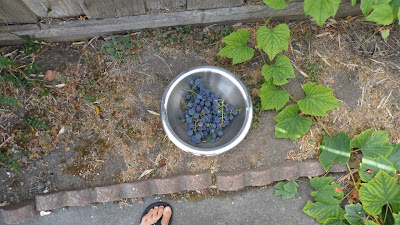Regular fertilizer applications made all the difference in my backyard organic fruit and vegetable garden this summer, but you're in for a big surprise if you think you can only have a lush, productive garden with
synthetic fertilizers and other costly inputs.
As the wind chimes on my back stoop tinkled in the gentle summer breeze, I reflected on one of the most prolific gardens I have ever tended, and I realized this could be the dawn of a new
golden age of gardening for me. I don't want to leak any secrets, but I just can't hold it in anymore: it took a real fertility whiz to get my garden back on track--Amber Waters, who holds a PhD in agroecology with an emphasis in natural fertilization methods, actually deserves most of the credit.
And for my gardening counterparts in French-speaking parts of the world, oui oui, vous pouvez aussi avoir un beau jardin sans l'utilisation d' engrais synthétiques.
 |
| The lawn is mostly dead, but everything in the box is verdant. |
 |
| This bed has a mix of basils, tomato, serrano and jalapeno chiles, zinnias, and white alyssum, plus several large volunteer squashes, a few volunteer fava bean plants, and a few volunteer vetch sprouts. Somewhere in all of that is some type of thyme and a Mexican mint marigold. |
 |
| Sweet almonds harvested from a neighbor's tree. |
 |
| This year there are seven volunteer sunflower plants along the west fence. |


















































